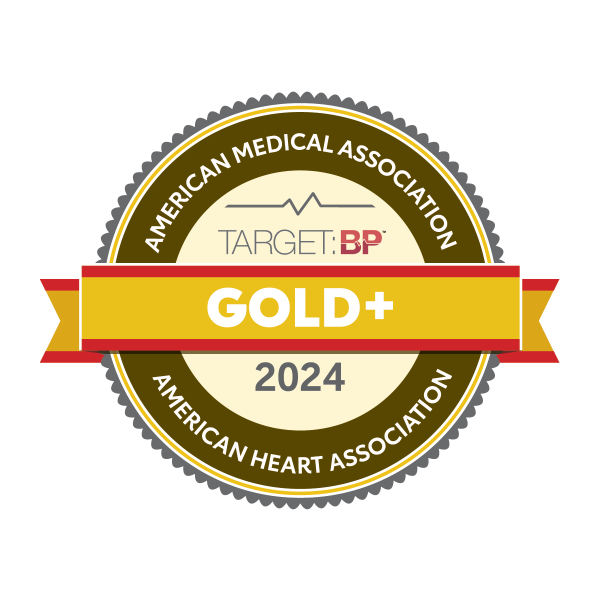Trinity Health Of New England Medical Group Receives National Recognition for Efforts to Improve Blood Pressure Control
November 21, 2024HARTFORD, CT. — Twenty-one Trinity Health Of New England Medical Group internal medicine and primary care practices have been recognized by the American Heart Association and American Medical Association for their commitment to improving blood pressure (BP) control rates, earning Gold Plus, Gold, and Silver-level recognition as part of Target: BP™.
The Gold Plus Award recognizes practices that demonstrate a commitment to measurement accuracy and in which high blood pressure is controlled in 70 percent or more of the affected adult patients. The following Trinity Health Of New England Medical Group practices have received the Gold Plus Award:
- East End Primary Care
- East Main Internal Medicine
- Naugatuck Internal Medicine
- Prospect Primary Care Partners
- Southbury Internal Medicine
- Watertown Internal Medicine
- Wolcott Internal Medicine
- Cheshire Primary Care
- Enfield Primary Care
- Farmington Primary Care
- Glastonbury Primary Care
- Rocky Hill Primary Care
- Somers Primary Care
- Windsor Locks Primary Care
- Trinity Health Of New England Medical Group: Springfield
- Trinity Health Of New England Medical Group: Chicopee
- Trinity Health Of New England Medical Group: Agawam
The Gold Award recognizes practices in which high blood pressure is controlled in 70 percent or more of the adult patients affected. Trinity Health Of New England Medical Group’s Family Medicine Center of East Hartford has received the Gold Award.

The Silver Award recognizes practices that have demonstrated a commitment to improving blood pressure control through measurement accuracy. Trinity Health Of New England’s FHC Medicine Pediatrics, Bloomfield Internal Medicine, and West Hartford Primary Care and Women’s Health have received the Silver Award.
High blood pressure, or hypertension, is a leading risk factor for heart attacks, strokes, and preventable death in the U.S. There are 122.4 million U.S. adults living with hypertension. The is nearly half of all adults in the country.1 Unfortunately, just a quarter of them have their BP under control, making both diagnosis and effective management critical.2 In the U.S., heart disease and stroke are the No. 1 and No. 5 causes of death, respectively, and stroke is a leading cause of disability.
“Addressing blood pressure management is key for better cardiovascular health – and critical today, when heart disease and stroke continue to be leading causes of death for adults in the U.S.,” said Walter Trymbulak, M.D., PhD, Chief Medical Officer, Trinity Health Of New England Medical Group. “High blood pressure is a leading risk factor of heart disease and stroke that can often be prevented or managed if diagnosed and treated properly.”
Target: BP is a national initiative formed by the American Heart Association and American Medical Association in response to the high prevalence of uncontrolled blood pressure. The initiative aims to help health care organizations and care teams, at no cost, improve blood pressure control rates through an evidence-based quality improvement program and recognizes organizations, like Trinity Health Of New England Medical Group, that are committed to improving blood pressure control.
“By committing to helping more people in their service area control their blood pressure and reduce their risks for future heart disease and stroke, Trinity Health Of New England Medical Group is taking a key step to helping more people live longer, healthier lives,” said Yvonne Commodore-Mensah, PhD, MHS, RN, FAHA, Target: BP advisory group volunteer and associate professor at Johns Hopkins School of Nursing. “Trinity Health Of New England Medical Group’s participation in the Target: BP initiative shows its dedication to turning clinical guidelines into lifelines for patients and their families.”
1 Martin S, et al. 2024 Heart Disease and Stroke Statistics: A Report of US and Global Data From the American Heart Association. Table 29-1. Circulation. 2024;149:e347–e913.
2 Martin S, et al. 2024 Heart Disease and Stroke Statistics: A Report of US and Global Data From the American Heart Association. Table 8-2. Circulation. 2024;149:e347–e913.
